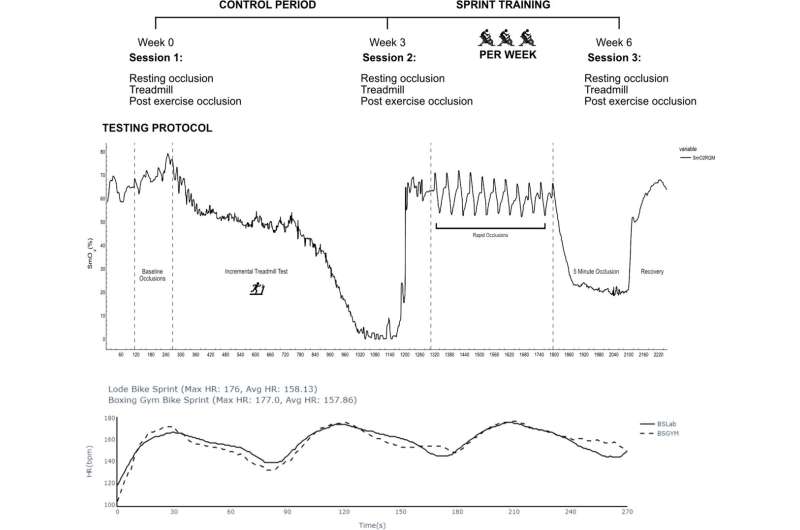New research from Abertay University reveals that just three weeks of high-intensity sprint training can dramatically improve elite athlete endurance by enhancing mitochondrial activity. This groundbreaking study sheds light on the powerful benefits of short, focused workouts and their impact on the ‘batteries’ of our cells. Mitochondria play a crucial role in energy production, and this discovery could revolutionize training regimens across a wide range of sports.

Unlocking Endurance
The Abertay University research team led by sports scientists John Babraj and Andrew Usher, studied the effects of cycle-based sprint training on fatigue resistance and mitochondrial function over a six-week period in nine professional boxers.
Studies like these have traditionally used near-infrared spectroscopy (NIRS) to estimate muscle oxygen consumption, providing useful information about what is happening inside the athletes´ bodies. What they found was quite impressive; at the point when they hit fatigue the sprint training program, on average, increased mitochondrial function by a whopping 160% and prolonged cycling performance by 8% against an ascending workload!
A Versatile Training Approach
The sprint training protocol was specifically constructed to be user-friendly and efficient for top level athletes. Weeks 1–5; all participants completed three sprint sessions per week, with each session comprising three 30-second all-out sprints with 60 seconds of rest. Most significantly, the training was performed on readily available stationary exercise bicycles, indicating that such a method could potentially be deployed using inexpensive general-purpose equipment.
‘This study just adds to the mounting evidence that sprint training performs very well for improving endurance and reducing fatigue over a multitude of sports at professional level, suggests lead researcher John Babraj. He adds: “Elite athletes spend a large chunk of time trying to improve recovery times and delay the onset of fatigue, so although this study was performed with boxers, it could be totally relevant for many other sports.
The Power of NIRS Technology
The research was underpinned by the monitoring of NIRS in the Human Performance Lab at Abertay University. The researchers used this approach to measure how the sprint training regimen altered oxygen consumption in the muscles of their athletes, revealing important physiological adaptations.
‘Using NIRS monitors has been crucial in revealing the vast spectrum of benefits that sprint training can have in trained individuals,’ Babraj said. This state-of-the-art technology uncovered the astounding 160% rise in mitochondrial activity and could help to inform training and recovery practices of top-performing athletes going forward.
